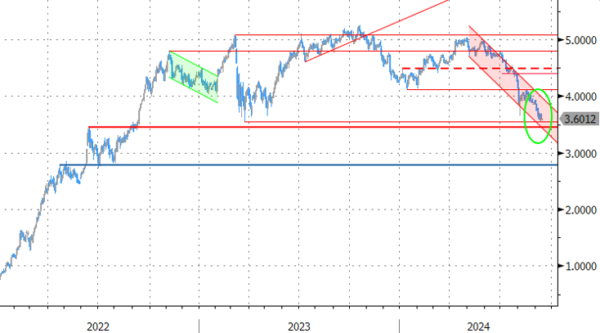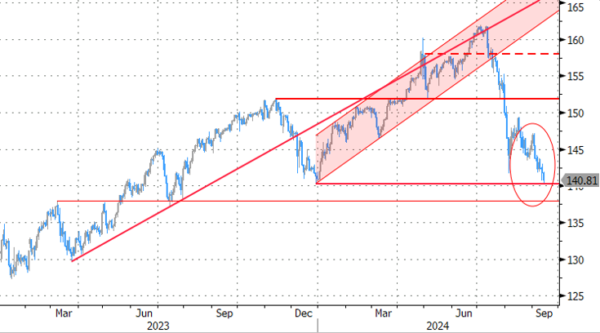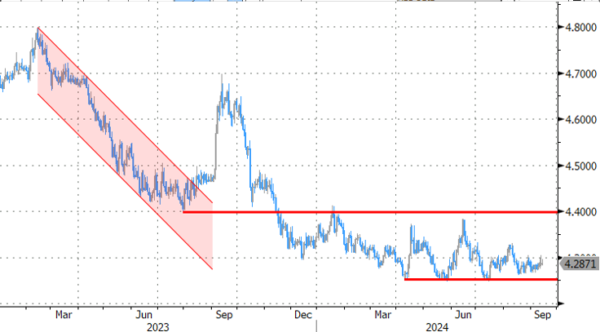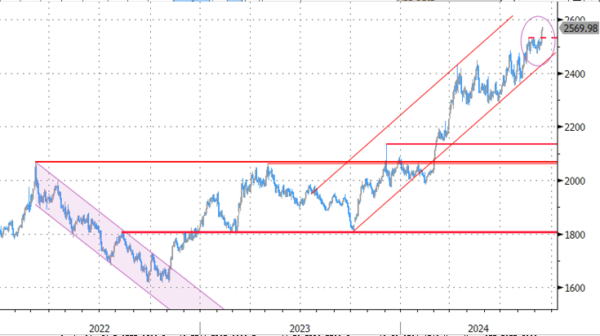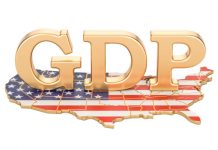Markets
After Wednesday’s slightly higher than expected August (core) CPI , for a brief while it seemed that the debate on the magnitude of the inaugural Fed rate cut had been concluded in favour of a 25 bps step. However, it isn’t. Money markets again seen an almost even chance between a 25 and 50 bps step. Market talk at this stage isn’t about data anymore. Next week’s US retail sales or other second tier data probably also won’t be gamechangers anymore. The debate now is a about appropriate central bank tactics. It is fueled by high profile columns in the Financial Times (Fed Wrestles with how aggressively to cut interest rates) and the Wall Street Journal (The Fed rate cut dilemma: Start big or Small?). The articles bring an in extenso list of tactical arguments pro and contra a 50 bps start. We retain just a few. Pro 25 bps. A cautious start allows the Fed to assess the impact. It might adjust as necessary further out in the economic cycle. A 50 bps step also risks markets wondering whether the Fed has become worried that the hoped for soft landing is at risk, causing markets to position for an outright recession/risk-off scenario. Pro 50 bps. Policy is currently highly restrictive. If the Fed wants to avoid the risk of a further deterioration of the labour market as Powell highlighted at Jackson Hole, it makes sense to swiftly bring the policy rate closer to neutral. The Fed then avoids the risk of being accused of having been behind the curve if the economy unexpectedly cools more than expected. If the soft landing materializes, it can then slow its easing or take a pause somewhere next year. The new dots plot also might support the logic of a 50 bps step. Why start with 25 bps if a majority of governors expects 100 bps + easing to be warranted still this year. We don’t have any reason to assume that this new press debate during the black-out period is ‘originated’ from inside the Fed. Even so, most of the authorities ‘closely linked to the Fed’ in the articles (former NY Fed president Dudley, ex Powell adviser Jon Faust) are tilting toward a 50 bps step. As said, it’s about tactics and psychology rather than analyzing data. In this respect, we add another argument. Can the Fed on Wednesday take the risk of not doing 50 bps when markets by that time are positioned for a big step? Admittedly, this smells like a circle reasoning, but that’s often how markets work. In this exercise of tactics we think the Fed takes the least risk with a 50 bps step, paving the way for 150 bps cumulative easing still this year. Whatever the driver, US yields today again decline 7 bps (2-y) to 1 bp (30-y). German Bunds still underperform as the ECB didn’t commit to any rate path (2-y -2.5 bps; 30-y -0.5 bp). The dollar also prepares for an aggressive Fed-start with EUR/USD testing the 1.11 area. DXY dropped back to the 101 reference. USD/JPY (140.7) is about to test key 140.25 support (Dec 2023 low).
News & Views
In the Bank of England’s quarterly survey, UK households for the first time since November 2008 on balance expect interest rates to decline in the next 12 months. 38% of the respondents anticipated such a scenario vs 29% expecting higher rates still. The survey was conducted between August 2 and 6, after the BoE’s first rate cut to 5%. Inflation at that time hit the 2% mark on a headline basis. Households experience a much higher 5.2%, although that’s further down from 5.5% in the May survey. Their inflation expectations for the year ahead eased further from 2.8% to 2.7%, a three-year low and a significant improvement from the series high of 4.9% seen in August 2022. Inflation in two years’ time is seen at 2.6%, unchanged from previously, with the 5-yr gauge rising slightly to 3.2%. UK families also for the first time since February 2022 were satisfied in the way the central bank was controlling inflation. The net balance shifted from -4% to +4%, compared to a post-pandemic low of -21% in August 2023.
Polish rate setter Wnorowski said it’s likely that the central bank will cut rates in the second quarter of 2025. That’s a slight dovish change of tac compared to end July, when the council member only noted that discussions about the topic could begin. His comments dovetail with those made by NBP governor Glapinski last week. Wnorowski ruled out any cuts before the March inflation projections but said there may be “additional arguments coming from the biggest central banks” for a first reduction a bit later. If the scale of ECB and Fed easing becomes significant, it would accelerate their own decisions, he added. Wnorowski didn’t rule out that rates coming down 100 bps in total over 2025 from a current rate of 5.75%. Arguing against easing, he cited the government’s loose budget plan, which envisages another deficit of more than 5%.
Graphs
US 2-y yield: ST US yields holding near cycle lows as debate on 50 bps Fed inaugural rate cut continues
USD/JPY: testing end 2023 low as markets continue betting on further FED-BoJ policy divergence
EUR/PLN: zloty holding strong even as NBP starts debate on timing of first rate cut (admittedly still well in 2025).
Gold at all time high driven by lower yields, a weak dollar and investors hedging against glabal political and economic uncertainty




